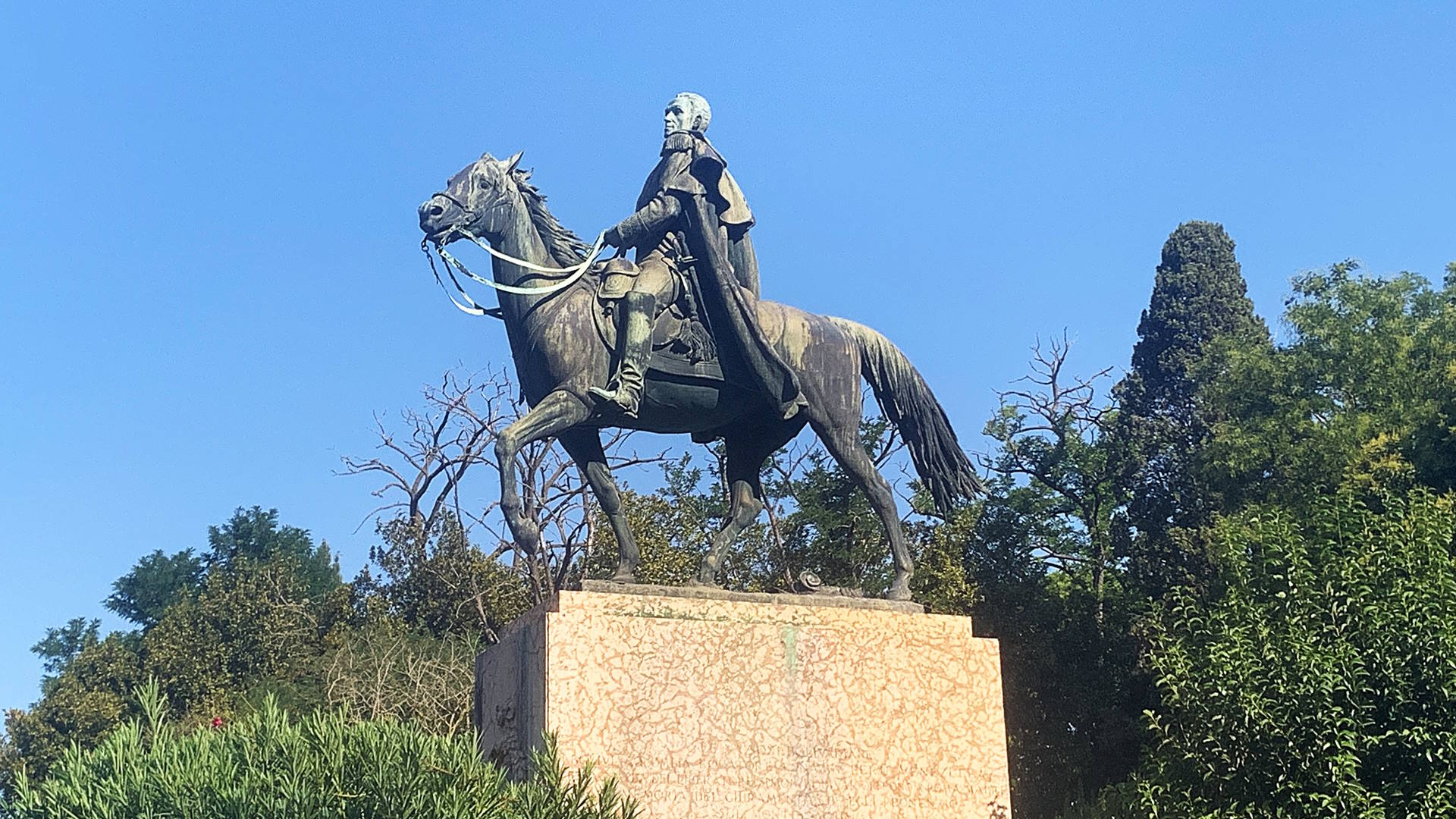
Rome, 1933: the tribute of six countries
Bolivia, Colombia, Ecuador, Panama, Peru and Venezuela: these were the Bolivarian nations that, in 1933, charged the famous Piedmontese sculptor Pietro Canonica with a work to celebrate General Simón Bolívar, one of the most emblematic figures in the history of Latin America.
The sculpture, completed in the following year, was donated to the City of Rome to commemorate the oath sworn by the South American patriot in the Eternal City: on 18 August 1805, the young Venezuelan patriot, just over 20 years old, travelling along Via Nomentana, arrived at Monte Sacro, where, inspired by the historical events of the secession of the Roman plebs in 494 BC, he firmly committed himself to free Latin America, declaring: ‘¡Juro delante de usted, juro por el Dios de mis padres, juro por ellos, juro por mi honor y juro por mi patria, que no daré descanso a mi brazo, ni reposo a mi alma, hasta que haya roto las cadenas que nos oprimen por voluntad del poder español!’, ‘I swear before you, I swear by the God of my fathers, I swear by them, I swear upon my honour and by my homeland that I shall not let my arm rest, nor my soul repose until I have broken the chains laid upon us by our Spanish oppressors!’.
A Latin American hero in the heart of Rome
Solemn and imposing, the monument dedicated to the legendary Venezuelan leader stands at the foot of the British School at Rome - in the centre of the square of the same name, flanked by the National Gallery (La Galleria Nazionale) and the Japanese Institute of Culture.
Inaugurated in 1934 and initially placed in the gardens of Viale Tiziano, the work was later moved to Pietro Canonica's home studio at the Fortezzuola, now a small and charming museum in Villa Borghese, where it remained until 1959, the year of the artist's death. On 19 April 1960, on the occasion of the 150th anniversary of Venezuela's independence, the monument was permanently moved to its current location, at the same time named Piazzale Simon Bolivar. At the base of the statue, a bronze plaque was also placed, a tribute to the victories of the great general, along with the "land of the battlefields on which the Bolivarian armies triumphed in their fight for freedom", as the inscription states.
An elegant symbol of freedom and power
The monument to the general, although inspired by the equestrian statue in Lima by Adamo Tadolini, a pupil of Canova, depicts the Venezuelan patriot in a less dynamic but more harmonious and calm pose.
In 1954, at the request of the Colombian government, Canonica made a new model of the sculpture for a copy of the work, as the original plaster prototype had been destroyed during the Second World War. The model, later used to make several copies in different Latin American cities, is preserved in the museum entitled to the artist, once the sculptor's atelier home.
Made of bronze and standing on a large marble base, the work features "El Libertador" riding an elegant horse in slight movement, wearing his uniform, his face proud and dignified, and his expression conveying courage and determination. The hero seems to look to the other side of Viale delle Belle Arti, where the statue of another legendary figure from South American history, the Argentine general Josè de San Martin, stands symmetrically.
Photo Turismo Roma
Information
 Condividi
Condividi
Location
To find out about all accessibility services, visit the Rome accessible section.











































